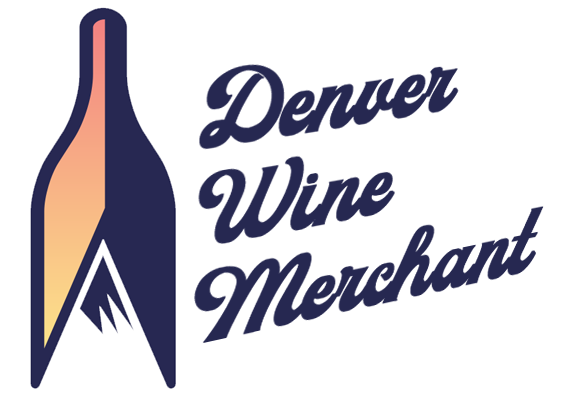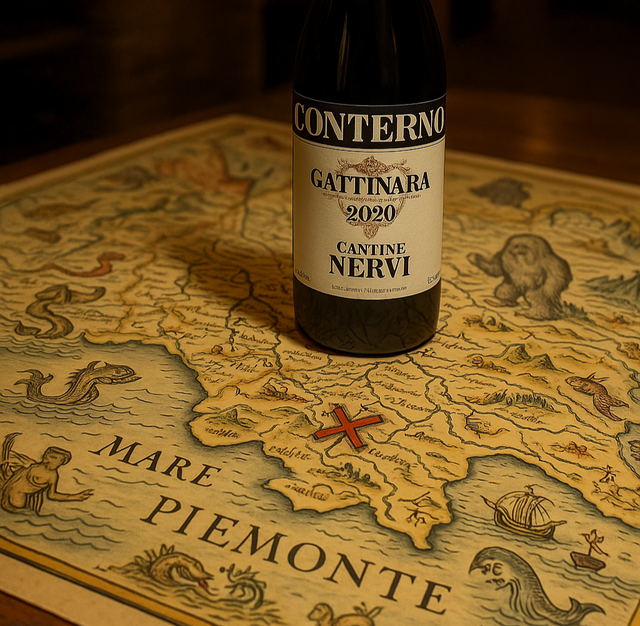Piedmont Club: May 2025
It's hard to imagine visiting Piedmont and not wanting to move there. It's an amazing land with the Alps dominating the skyline on three sides. Perhaps it lacks an ocean, but a quick drive south over the Maritime Alps leads to Liguria, the Italian Riviera. Since Piedmont itself means "foot of the mountain," it makes sense that mountains are often in view from anywhere in the region on a clear day. The most prominent are the dramatic, snow-capped Alps to the north, but so far in this club, we've primarily focused on the southern side of Piedmont—until this month.
Today, we journey to the northern half of the region, largely known as Alto-Piemonte. (Note: "Piemonte" is the Italian spelling of Piedmont, without the 'd'. Personally, saying "Alto-Piedmont" doesn't quite sound right.) Gattinara is the most well-known subregion of Alto-Piemonte and, in fact, was famous well before Barolo. However, factors like the development of railroads, World War II, and the phylloxera epidemic led to Barolo enjoying greater fame while Gattinara suffered during the 19th and 20th centuries. Today, there's about twenty times more vineyard area in Barolo. Still, both regions pale in comparison to areas such as Bordeaux and Napa Valley. Gattinara currently has about 220 acres planted, which is roughly the total size of many larger wineries in those other famous regions. Gattinara can be found on the map as the dark purple in the middle of the northern DOC areas.

The small region received a significant boost in fame in 2018 when Roberto Conterno, current owner and operator of Barolo's iconic Giacomo Conterno winery (easily a top-five, if not the top, Barolo producer), bought the historic Nervi estate in Gattinara. The winery was then rebranded as Nervi-Conterno, and the label was adjusted accordingly. It wasn't just the label that changed; Roberto implemented better, practicing-organic vineyard management and upgraded the winery facilities. The quality at Nervi was already notable, but since 2018, the winery has become the clear leader of the region. This brings us to our first wine.
Nervi-Conterno Gattinara 2020:
The first vintage of Gattinara branded as Nervi-Conterno was 2014, but 2020 marks the third vintage under Conterno's majority ownership, and his influence continues to elevate the quality. While using some of the same equipment and techniques as he does in Barolo, Roberto is not trying to replicate Barolo in the distinctly different volcanic soils of Gattinara.
The wines of Alto-Piemonte naturally have a lighter color and a more pronounced mineral quality in their Nebbiolo. Many producers blend in small amounts of other indigenous grapes to add color and weight, but Nervi-Conterno does not blend anything into their Gattinara – this wine is 100% Nebbiolo grown in four different crus across Gattinara's volcanic soils. Aging takes place over 30 months in large, neutral Austrian casks, which Roberto brought in after upgrading the winery.
All this technical detail is meaningless if the wine isn't good, but then it wouldn't be featured in the Piedmont Club! This is an aromatic and delicate expression of Nebbiolo, though it certainly still packs some tannin. I admit there are occasional days when Barolo just sounds too powerful to pair with dinner, and Gattinara checks all the Nebbiolo boxes with extra aromatics and less face-ripping tannin. I hope you all enjoy the spice and finesse of this excellent example of Alto-Piemonte Nebbiolo. On to the next!
Vietti Barbera d'Alba Scarrone 2022:
For the second wine, we return to the familiar territory of the Langhe, nestled in the Maritime Alps foothills. Scarrone is actually a Barolo cru located on the south and east-facing slope just below the town of Castiglione Falletto, the most central of the five major Barolo villages. Some producers think Vietti is crazy for not having replaced their Barbera vines with the more lucrative Nebbiolo here, but Vietti believes—correctly, in my opinion—that Barbera from this specific site is truly special. Scarrone is the pink cru on the right of this map of Castiglione.

I've tasted through Vietti's Barbera offerings multiple times, and the Scarrone almost always emerges as my favorite. It possesses a significant mineral component and a floral complexity not typically found in most Barberas. The wine is full and silky with minimal tannin, as is natural for the grape. Barbera can be a bit of a chameleon: at its cheapest, it might taste like simple cranberry sauce, but as yields drop and concentration increases, the fruit takes on more blue and purple qualities. The Scarrone almost always showcases both sides in harmony, although the darker fruit profile dominates in the 2022 vintage due to the hot, drought conditions. Note that Vietti also produces a more expensive old vine version, but I've always equally enjoyed the younger vine wine which we have this month.
Vietti as a producer has an extremely storied history, though times are changing. This 2022 vintage is the last one with the renowned couple Luca Currado and Elena Penna, who truly made Vietti what it is today, still fully in charge of winemaking. They have since departed to form their new project, Cascina Penna-Currado (soon to be featured in this club!), seven years after the Vietti winery was sold to an American businessman who made his fortune with the Kum & Go convenience store chain (I'm not making this up!). Vietti's future likely remains bright, given its bevy of incredible vineyard holdings and deep pockets to maintain quality production, but it remains to be seen if the wines will retain the same distinctive charm. Besides the fact that this wine consistently ranks among the top Barberas in the world, I wanted to ensure we featured a Vietti bottling in the club that was crafted before the departure of Elena and Luca.
That's the club for May! Enjoy the end of Spring, and look forward to new, exciting wines coming on July 1st!


0 Comments
There are no comments for this article. Be the first one to leave a message!